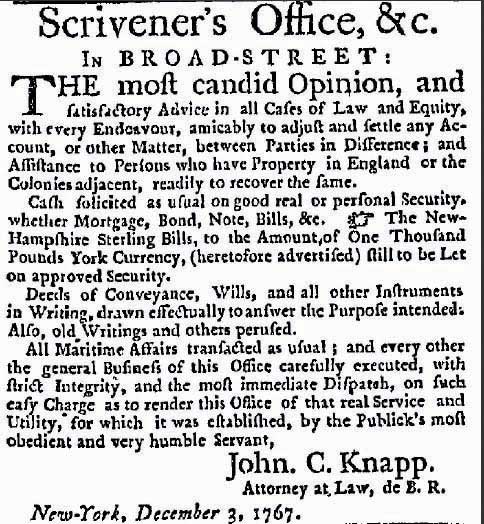This is “Transaction Costs, Asymmetric Information, and the Free-Rider Problem”, section 8.2 from the book Finance, Banking, and Money (v. 1.1). For details on it (including licensing), click here.
For more information on the source of this book, or why it is available for free, please see the project's home page. You can browse or download additional books there. To download a .zip file containing this book to use offline, simply click here.
8.2 Transaction Costs, Asymmetric Information, and the Free-Rider Problem
Learning Objective
- Why is most external finance channeled through financial intermediaries?
Minimum efficient scaleThe smallest a business can be and still remain efficient and/or profitable. in finance is larger than most individuals can invest. Somebody with $100, $1,000, $10,000, even $100,000 to invest would have a hard time making any profit at all, let alone the going risk-adjusted return. That is because most of his or her profits would be eaten up in transaction costs, brokerage fees, the opportunity cost of his or her time, and liquidity and diversification losses. Many types of bonds come in $10,000 increments and so are out of the question for many small investors. A single share of some companies, like Berkshire Hathaway, costs thousands or tens of thousands of dollars and so is also out of reach.http://www.berkshirehathaway.com/ Most shares cost far less, but transaction fees, even after the online trading revolution of the early 2000s, are still quite high, especially if an investor were to try to diversify by buying only a few shares of many companies. As discussed in Chapter 7 "Rational Expectations, Efficient Markets, and the Valuation of Corporate Equities", financial markets are so efficient that arbitrage opportunities are rare and fleeting. Those who make a living engaging in arbitrage, like hedge fund D. E. Shaw, do so only through scale economies. They need superfast (read “expensive”) computers and nerdy (read “expensive”) employees to operate custom (read “expensive”) programs on them. They also need to engage in large-scale transactions. You can’t profit making .001 percent on a $1,000 trade, but you can on a $1,000,000,000 one.
What about making loans directly to entrepreneurs or other borrowers? Fuggeddaboutit! The time, trouble, and cash (e.g., for advertisements like that in Figure 8.2 "Need a loan?") it would take to find a suitable borrower would likely wipe out any profits from interest. The legal fees alone would swamp you! (It helps if you can be your own lawyer, like John C. Knapp.) And, as we’ll learn below, making loans isn’t all that easy. You’ll still occasionally see advertisements like those that used to appear in the eighteenth century, but they are rare and might in fact be placed by predators, people who are more interested in robbing you (or worse) than lending to you. A small investor might be able to find a relative, co-religionist, colleague, or other acquaintance to lend to relatively cheaply. But how could the investor know if the borrower was the best one, given the interest rate charged? What is the best rate, anyway? To answer those questions even haphazardly would cost relatively big bucks. And here is another hint: friends and relatives often think that a “loan” is actually a “gift,” if you catch my “drift.”
Figure 8.2 Need a loan?

From Early American Newspapers, an Archive of Americana Collection, published by Readex (Readex.com), a division of NewsBank, Inc.
A new type of banking, called peer-to-peer bankingIn this new type of banking, a facilitator links lenders to borrowers, acting more like a securities broker than a bank., might reduce some of those transaction costs. In peer-to-peer banking, a financial facilitator, like Zopa.com or Prosper.com, reduces transaction costs by electronically matching individual borrowers and lenders. Most peer-to-peer facilitators screen loan applicants in at least a rudimentary fashion and also provide diversification services, distributing lenders’ funds to numerous borrowers to reduce the negative impact of any defaults.For details, see “Options Grow for Investors to Lend Online,” Wall Street Journal, July 18, 2007. Although the infant industry is currently growing, the peer-to-peer concept is still unproven and there are powerful reasons to doubt its success. Even if the concept succeeds (and it might given its Thomas Friedman–The World Is Flatishnesshttp://en.wikipedia.org/wiki/The_World_is_Flat), it will only reinforce the point made here about the inability of most individuals to invest profitably without help.
Financial intermediaries clearly can provide such help. They have been doing so for at least a millennium (yep, a thousand years, maybe more). One key to their success is their ability to achieve minimum efficient scale. Banks, insurers, and other intermediaries pool the resources of many investors. That allows them to diversify cheaply because instead of buying 10 shares of XYZ’s $10 stock and paying $7 for the privilege (7/100 = .07) they can buy 1,000,000 shares for a brokerage fee of maybe $1,000 ($1,000/1,000,000 = .001). In addition, financial intermediaries do not have to sell assets as frequently as individuals (ceteris paribus, of course) because they can usually make payments out of inflows like deposits or premium payments. Their cash flow, in other words, reduces their liquidity costs. Individual investors, on the other hand, often find it necessary to sell assets (and incur the costs associated therewith) to pay their bills.
As specialists, financial intermediaries are also experts at what they do. That does not mean that they are perfect—far from it, as we learned during the financial crisis that began in 2007—but they are certainly more efficient at accepting deposits, making loans, or insuring risks than you or I will ever be (unless we work for a financial intermediary, in which case we’ll likely become incredibly efficient in one or at most a handful of functions). That expertise covers many areas, from database management to telecommunications. But it is most important in the reduction of asymmetric information.
You may recall from Chapter 2 "The Financial System" that we called asymmetric information the devil incarnate, a scourge of humanity second only to scarcity. That’s no exaggeration. Asymmetric information makes our markets, financial and otherwise, less efficient than they otherwise would be by allowing the party with superior information to take advantage of the party with inferior information. Where asymmetric information is high, resources are not put to their most highly valued uses, and it is possible to make outsized profits by cheating others. Asymmetric information, we believe, is what primarily gives markets, including financial markets, the bad rep they have acquired in some circles.
Figure 8.3 Adverse selection, moral hazard, and agency problems incarnate

© 2010 Jupiterimages Corporation
Financial intermediaries and markets can reduce or mitigate asymmetric information, but they can no more eliminate it than they can end scarcity. Financial markets are more transparent than ever before, yet dark corners remain.http://www.investopedia.com/articles/00/100900.asp The government and market participants can, and have, forced companies to reveal important information about their revenues, expenses, and the like, and even follow certain accounting standards.http://www.fasb.org/ As a CEO in a famous Wall Street Journal cartoon once put it, “All these regulations take the fun out of capitalism.” But at the edges of every rule and regulation there is ample room for shysters to play.http://knowledge.wharton.upenn.edu/article.cfm?articleid=585&CFID=4138806&CFTOKEN=88010645 When managers found that they could not easily manipulate earnings forecasts (and hence stock prices, as we learned in Chapter 7 "Rational Expectations, Efficient Markets, and the Valuation of Corporate Equities"), for example, they began to backdate stock optionsIn this context, a form of compensation given to executives, managers, and sometimes other employees to reward them for increasing their company’s stock price. By backdating the options, managers were able to profit from their stock options, although stock prices declined (or did not rise very much). to enrich themselves at the expense of stockholders and other corporate stakeholders.
What is the precise nature of this great asymmetric evil? Turns out this devil, this Cerberus, has three heads: adverse selection, moral hazard, and the principal-agent problem. Let’s lop off each head in turn.
Key Takeaways
- Transaction costs, asymmetric information, and the free-rider problem explain why most external finance is channeled through intermediaries.
- Most individuals do not control enough funds to invest profitably given the fact that fixed costs are high and variable costs are low in most areas of finance. In other words, it costs almost as much to buy 10 shares as it does to buy 10,000.
- Also, individuals do not engage in enough transactions to be proficient or expert at it.
- Financial intermediaries, by contrast, achieve minimum efficient scale and become quite expert at what they do, though they remain far from perfect.
- Transaction costs are any and all costs associated with completing an exchange.
- Transaction costs include, but are not limited to, broker commissions; dealer spreads; bank fees; legal fees; search, selection, and monitoring costs; and the opportunity cost of time devoted to investment-related activities.
- They are important because they detract from bottom-line profits, eliminating or greatly reducing them in the case of individuals and firms that have not achieved minimum efficient scale.
- Transaction costs are one reason why institutional intermediaries dominate external finance.




